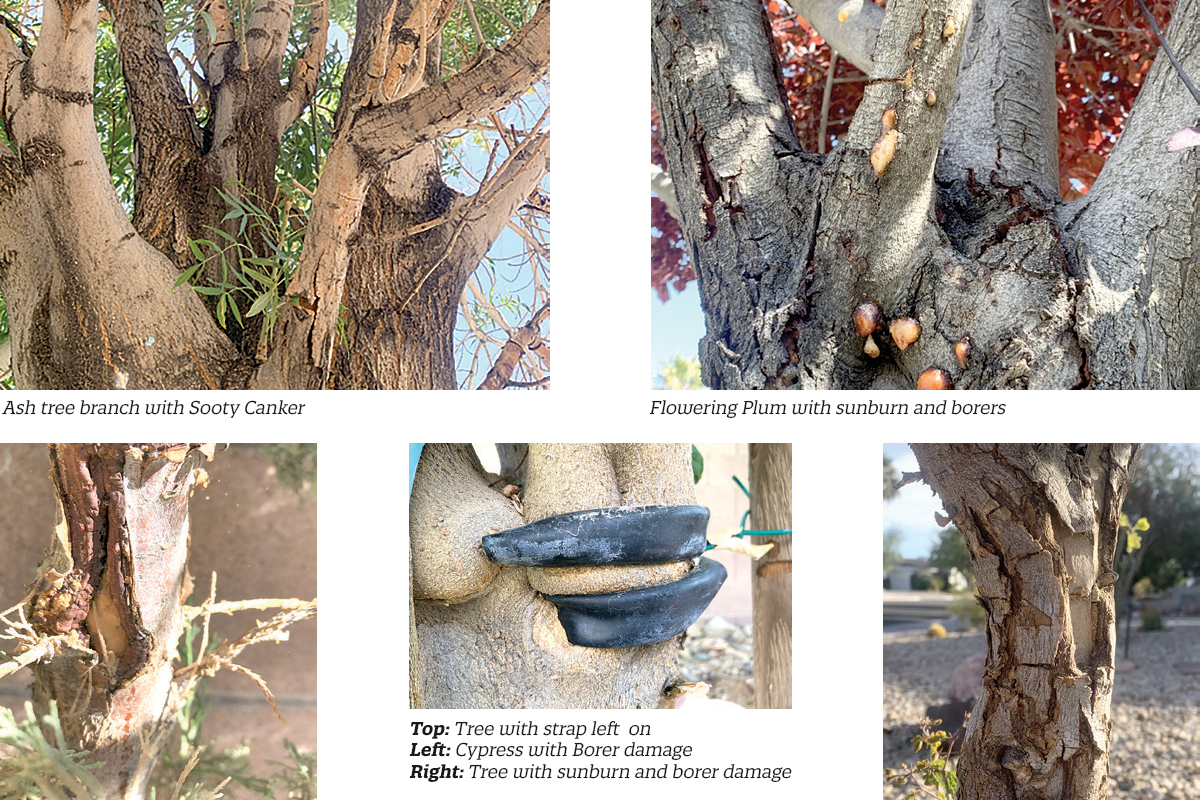
Many Las Vegas trees struggle and perish prematurely. Despite our efforts, “real killers” are often silent, cumulative issues beginning long before symptoms appear. Understanding these is crucial for a resilient urban forest.
INSTALLATION & IRRIGATION MISSTEPS
Trees often struggle from day one. Sunburn on young, exposed bark or girdling from forgotten tie straps cause irreversible damage. The most widespread killer is improper irrigation. This often begins with inadequate emitter placement by the installer, typically with only one or two emitters at planting. Trees, especially newly planted ones, need deep, infrequent watering that extends beyond the root ball and, over time, well beyond the canopy edge. Many trees, having spent years dependent on frequent, shallow turf irrigation, never develop the deep, wide root systems for intense heat. When turf is removed for conservation, this process often cuts and removes the top layer of fine feeder roots, instantly traumatizing the tree. Then, inadequate water replacement (less than 70 percent of what it was receiving) spells disaster, and eventual death.

SOIL & NUTRIENT NEGLECT
Healthy roots thrive in healthy soil. Here in the desert, our soil is void of organic matter. It’s high in salts, alkaline and high in pH, severely limiting a tree’s ability to absorb vital nutrients. Such soil also fails to retain moisture, leaving roots dry and unable to grow. Regularly amending the soil, especially seasonally, is vital. A thriving root zone, rich with decomposing organic matter, is necessary for new roots to prosper and for trees to truly flourish.
DISEASE & DAMAGING PRACTICES
Fungal diseases like Sooty Canker are a significant and often fatal threat, commonly affecting ash, mulberry, elm and sycamore trees, especially older ones in turf lawns. This destructive fungus spreads readily, often through improper pruning practices. Unsanitized tools used by well-intentioned but unknowing service providers carry pathogens from infected trees to healthy ones, creating entry points for fatal disease. Such bad habits cause irreversible damage, contributing to widespread decline.
PROACTIVE TREE CARE
As our dry, hot environment intensifies, trees will decline if we don’t take proactive steps early. Knowing your trees, ensuring consistent health, and recognizing early signs of insect infestation or disease onset are crucial. Remember the saying, “The right tree in the right spot”—plant only trees you can truly provide for. Our expert staff is trained to identify trees and issues that arise, giving you the advice needed for long-living trees.
Observant Reader, Robert asks: My mature ash tree has branches dying with leaves still on them, and some areas look wet or discolored. I’ve also noticed cracking and sooty black areas. What could be causing this decline, and is it serious?”
Dr. Q’s Answer: Your observations are crucial. The symptoms you describe could indicate one of three serious issues common in ash trees. First, it might be Sudden Ash Decline, a blight-like condition. Second, the wet-looking areas, cracking, and sooty black patches strongly suggest Sooty Canker, a fatal fungal disease often spread by improper pruning. Lastly, a dense, unpruned crown (a structural issue) can lead to branches within the crown dying as they cannot properly send nutrients upward, sometimes even causing the central leader to perish. Immediate arborist diagnosis is vital for cause and intervention.
Star Nursery, Your Garden’s Partner for every bloomin’ thing!
I’m Joey Lynn and I’ll see you again next month.


